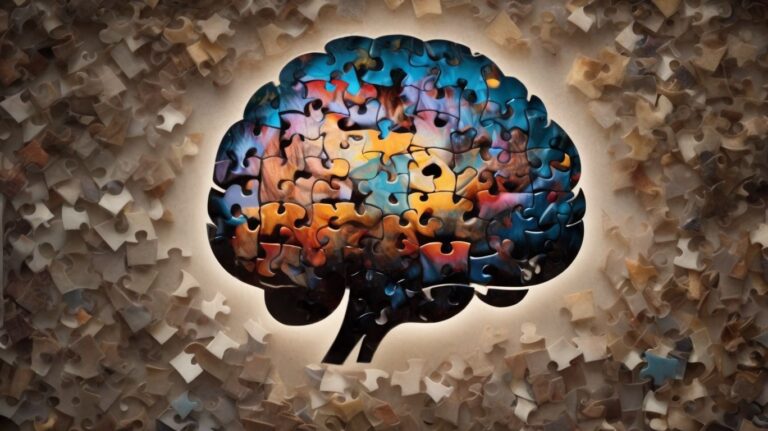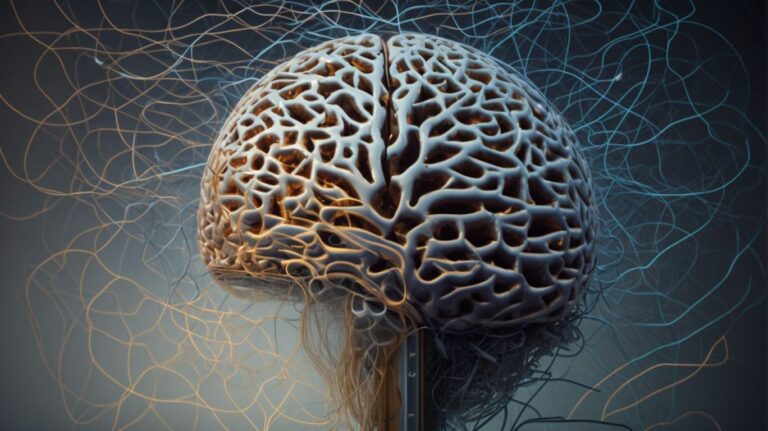Have you ever wondered how our minds perceive the world around us? Gestalt psychology offers a unique perspective on this question, focusing on how we process information and form perceptions.
In this article, we will explore the origins of Gestalt psychology and its key principles, such as the Principle of Proximity and the Principle of Closure. We will also discuss how this theory has evolved over time, its integration with other psychological theories, and its influence on modern psychology.
We will delve into the diverse applications of Gestalt psychology in areas such as advertising, user experience design, therapy, education, and social psychology. Join us as we uncover the fascinating world of Gestalt psychology and its impact on our daily lives.
Contents
- 1 What Is Gestalt Psychology?
- 2 Who Were The Founders Of Gestalt Psychology?
- 3 What Are The Principles Of Gestalt Psychology?
- 4 How Has Gestalt Psychology Evolved Over Time?
- 5 What Are The Modern Applications Of Gestalt Psychology?
- 6 Frequently Asked Questions
- 6.1 What are some modern applications of Gestalt Psychology?
- 6.2 How is Gestalt Psychology used in advertising and design?
- 6.3 Can Gestalt Psychology be applied in therapy?
- 6.4 Are there any benefits to incorporating Gestalt Psychology principles in education?
- 6.5 How does Gestalt Psychology contribute to the field of artificial intelligence?
- 6.6 What role does Gestalt Psychology play in user experience design?
What Is Gestalt Psychology?
Gestalt psychology is a theory of perception that explores how individuals interpret and make sense of the world around them, emphasizing the holistic approach to understanding cognitive processes and mental activity.
This psychological perspective, developed in the early 20th century by Max Wertheimer, Kurt Koffka, and Wolfgang Köhler, focuses on how humans perceive objects as unified wholes rather than a collection of separate elements. According to these pioneering psychologists, the mind organizes stimuli into meaningful patterns, highlighting the principle of emergence, where the whole is greater than the sum of its parts. Gestalt psychology also delves into the concept of closure, where individuals mentally fill in gaps to perceive complete shapes or forms.
Who Were The Founders Of Gestalt Psychology?
The founders of Gestalt psychology, Max Wertheimer, Kurt Koffka, and Wolfgang Köhler, were prominent figures who revolutionized the understanding of human perception and cognition through their groundbreaking research and insights.
Max Wertheimer, known for introducing the concept of phi phenomenon, explored the role of perception in the organization of sensory information, emphasizing the significance of holistic perception over the analysis of individual elements.
Kurt Koffka, a key contributor, focused on the principles of organization in perception, proposing that the whole is different from the sum of its parts, laying the foundation for Gestalt principles such as figure-ground relationships and perceptual grouping.
Wolfgang Köhler, renowned for his studies on insight learning in chimpanzees, demonstrated how problem-solving abilities and sudden comprehension contribute to cognitive processes, highlighting the importance of understanding mental processes beyond simple stimulus-response associations.
What Are The Principles Of Gestalt Psychology?
The principles of Gestalt psychology, rooted in the laws of perception and the Gestalt laws of visual perception, guide how individuals organize and interpret sensory information, shaping their understanding of the world.
One of the key Gestalt principles is the Principle of Proximity, which suggests that objects placed close together are perceived as a group or pattern. This principle impacts how we perceive relationships between elements, influencing our overall impression of a scene. Similarly, the Principle of Similarity asserts that we tend to group together objects that share similar visual characteristics, such as shape or color, even if they are not physically close, illustrating how our minds naturally seek patterns and connections.
The Principle Of Proximity
The Principle of Proximity in Gestalt psychology highlights how individuals tend to perceive elements that are close to each other as a unified group, influencing their overall interpretation and organization of visual stimuli.
This principle plays a crucial role in shaping visual perception by guiding how the brain groups and organizes visual information based on their proximity. When objects are near each other, they are perceived as belonging together, forming a cohesive unit in the viewer’s mind. This innate tendency stems from the way our cognitive processing functions, seeking patterns and relationships to make sense of the environment.
The Principle of Proximity is deeply intertwined with the larger framework of Gestalt laws, which emphasize the role of perception and how individuals naturally organize complex stimuli into meaningful wholes. By applying this principle, designers and artists can strategically arrange elements to create visually harmonious compositions that captivate the viewer’s attention and convey messages effectively.
The Principle Of Similarity
The Principle of Similarity posits that individuals tend to perceive similar elements as part of the same group or pattern, influencing their understanding of visual stimuli and the organization of sensory information.
Within the context of Gestalt psychology, the Principle of Similarity plays a critical role in shaping how individuals make sense of their surroundings. When presented with a collection of objects or shapes, people instinctively group together items that share common characteristics such as shape, color, size, or texture.
This grouping process aids in pattern recognition as the mind seeks to simplify complex stimuli into cohesive wholes. By recognizing similarities in elements, individuals are able to form relationships between different parts of a scene and create meaningful patterns. This cognitive mechanism underpins our ability to perceive objects as unified entities rather than disparate pieces.
The Principle Of Closure
The Principle of Closure suggests that individuals tend to perceive incomplete figures or patterns as whole and complete, demonstrating the mind’s tendency to fill in gaps and create unified perceptions.
This principle is fundamental in Gestalt psychology as it explains how the brain organizes visual elements into recognizable patterns. When presented with fragmented information, the mind automatically seeks to close gaps by mentally completing the missing parts. This concept plays a crucial role in visual perception as it allows individuals to make sense of ambiguous stimuli, aiding in pattern recognition and object constancy. Understanding closure helps in comprehending how we make sense of the world around us by forming holistic perceptions based on incomplete information.
The Principle Of Figure-Ground
The Principle of Figure-Ground articulates how individuals differentiate between the main object of focus (figure) and the background (ground) in visual stimuli, influencing their interpretation and organization of perceptual information.
When applying this principle, observers tend to perceive the figure as being in front of, or separate from, the ground, allowing for clear segmentation and recognition of objects in their visual field.
This concept plays a crucial role in visual segregation by guiding our attention towards the relevant elements within a scene.
The Principle of Figure-Ground aligns with the Gestalt laws of visual perception, such as proximity, closure, and similarity, contributing to how we naturally organize and interpret complex visual stimuli.
How Has Gestalt Psychology Evolved Over Time?
The evolution of Gestalt psychology from a focus on perception to a broader exploration of cognition reflects the theory’s integration with other psychological frameworks and its enduring influence on modern psychology.
Initially, Gestalt psychology rose to prominence in the early 20th century, primarily emphasizing how the human mind organizes individual elements into a unified whole, challenging the prevailing structuralist and functionalist views of psychology.
As research progressed, scholars within the Gestalt movement recognized the importance of cognition in shaping perception and behavior, leading to a shift towards studying complex mental processes such as problem-solving, decision-making, and language processing.
This shift enabled Gestalt psychology to align itself with cognitive psychology, paving the way for interdisciplinary collaborations and a deeper understanding of human thought and behavior.
From Perception To Cognition
The transition of Gestalt psychology from a focus on perceptual processes to a cognitive framework marked a significant paradigm shift, leading to the exploration of cognitive neuroscience and the interconnected nature of perception and cognition.
Building on this transition, Gestalt psychology delves into the internal mental processes involved in interpreting sensory information, memory, problem-solving, and decision-making.
By studying how the mind organizes and structures information, Gestalt theorists have contributed valuable insights into understanding the brain’s cognitive functions and human behavior.
This shift towards cognition also paved the way for research on attention, learning, language processing, and consciousness, enriching our comprehension of the intricate mechanisms underlying mental activity.
Integration With Other Theories
Gestalt psychology’s integration with other theories such as social psychology, philosophy, and cognitive frameworks has enriched the field of psychology, fostering interdisciplinary insights and novel perspectives on human behavior and consciousness.
This integration has led to a deep exploration of how individuals perceive and make sense of the world around them. Social psychology contributes by examining how social interactions and group dynamics influence these cognitive processes. Philosophical perspectives offer a philosophical lens through which to analyze the nature of consciousness and subjective experience. Within cognitive frameworks, the emphasis is on understanding mental processes and their relation to behavior, creating a comprehensive approach to studying human cognition and behavior.
The interdisciplinary nature of Gestalt psychology allows researchers and practitioners to draw on a wide array of tools and methodologies to address complex questions related to perception, cognition, and consciousness. By combining insights from different disciplines, scholars can better grasp the intricate mechanisms that underlie human behavior and thought. This collaborative approach fosters a more holistic understanding of the mind and its functions, leading to innovative applications in various fields such as education, design, and therapy.
Influence On Modern Psychology
Gestalt psychology’s enduring influence on modern psychology is evident in its contributions to understanding cognitive activity, mental processes, and the holistic approach to human behavior, shaping contemporary research and therapeutic interventions.
The principles of Gestalt psychology, with its emphasis on perception, organization, and the idea that the whole is greater than the sum of its parts, have had a profound impact on various aspects of today’s psychological practices.
- When applied to cognitive research, Gestalt principles provide valuable insights into how individuals perceive and interpret information, shedding light on key processes such as problem-solving and decision-making.
- In behavior therapy, Gestalt techniques focus on enhancing self-awareness, promoting personal growth, and encouraging individuals to confront unresolved issues, fostering positive behavioral change.
- The influence of Gestalt psychology can be seen in humanistic philosophies that prioritize individual experiences, subjective perceptions, and the interconnectedness between mind and body, emphasizing the importance of self-acceptance and authenticity.
What Are The Modern Applications Of Gestalt Psychology?
The modern applications of Gestalt psychology encompass diverse fields such as therapy, counseling, social psychology, and group dynamics, where its principles are instrumental in promoting self-awareness, communication, and holistic well-being.
In therapy, Gestalt psychology emphasizes the importance of focusing on the present moment, encouraging individuals to explore their thoughts, feelings, and behaviors in real-time interactions.
In counseling sessions, practitioners often utilize techniques derived from Gestalt principles like the empty chair technique to help clients gain insights into unresolved conflicts or suppressed emotions.
Within social dynamics, understanding Gestalt concepts like figure-ground relationship can enhance interpersonal relationships by fostering empathy and mutual understanding.
Advertising And Marketing
Gestalt psychology principles find application in advertising and marketing strategies, leveraging the psychology of perception and public opinion to create impactful campaigns that resonate with target audiences.
By understanding how individuals perceive and make sense of the world around them, advertisers can strategically design visuals and messages that capture attention and drive engagement. The principle of figure-ground relationships, for example, guides the placement of key elements to ensure they are easily distinguishable and memorable.
The concept of proximity helps advertisers group related information together to communicate a unified message clearly. This includes arranging product features and benefits in a cohesive manner to enhance consumer understanding and decision-making.
User Experience Design
User Experience Design incorporates Gestalt psychology principles to enhance visual perception, user interactions, and the overall usability of digital interfaces, creating intuitive and engaging user experiences.
Gestalt psychology plays a fundamental role in guiding designers to understand how users perceive and interact with digital products. By recognizing the principles of Gestalt psychology, designers can strategically utilize concepts such as proximity, similarity, closure, and continuity to organize information in a way that aligns with how the human mind naturally processes visuals.
These principles aid in optimizing visual perception in user interfaces, ensuring that elements are grouped logically, leading to effortless navigation and comprehension. Leveraging Gestalt psychology fosters the creation of intuitive designs that intuitively guide users through information hierarchies, enhancing the overall user experience.
Problem Solving And Creativity
Gestalt psychology informs problem-solving and creativity by encouraging a holistic approach to generating innovative solutions, fostering creative thinking, and exploring the interconnectedness of ideas and perspectives.
The holistic view in Gestalt psychology emphasizes that the whole is greater than the sum of its parts, suggesting that understanding the complete context is crucial in finding effective solutions. By considering the relationships between different elements of a problem or creative project, individuals can gain insights into how these components interact and influence each other, leading to more comprehensive and nuanced outcomes.
This approach also underscores the importance of perception in problem-solving, as Gestalt principles suggest that how a problem is perceived can significantly impact the strategies and solutions that individuals generate. By recognizing the role of perception and representation in the problem-solving process, individuals can explore alternative viewpoints and approaches, fostering a more flexible and adaptive mindset when tackling challenges.
Therapy And Counseling
Gestalt psychology principles form the foundation of Gestalt therapy and counseling, emphasizing self-awareness, contact, and the paradoxical theory of change to facilitate personal growth, healing, and holistic well-being.
In the realm of therapy and counseling, practitioners working within a Gestalt framework focus on the present moment experience, encouraging clients to heighten their awareness of thoughts, feelings, and behaviors. The emphasis on the ‘here and now’ allows individuals to acknowledge and address unresolved issues, fostering a deeper understanding of their internal dynamics.
Therapeutic interventions such as empty-chair technique, role-playing, and two-chair dialogue are commonly utilized to facilitate expression and exploration of conflicting emotions and inner conflicts.
Education And Learning
Gestalt psychology principles inform educational practices by emphasizing holistic learning, cognitive development, and the role of context in shaping learning outcomes, promoting experiential approaches and subjective understanding.
One of the key aspects of Gestalt psychology is its focus on how individuals perceive and make sense of the world around them. It emphasizes that learning is not merely a collection of isolated facts but a dynamic process that involves integrating new information with existing knowledge. By recognizing the interconnectedness of different aspects of learning, educators can design curriculum and learning experiences that cater to the whole learner.
Social Psychology And Group Dynamics
Gestalt psychology contributes to social psychology and group dynamics by illuminating the role of communication, ideologies, and language practices in shaping social discourse, fostering national unity, and understanding the dynamics of social environments.
Through its emphasis on the holistic nature of perception and cognition, Gestalt psychology offers insights into how individuals interact within groups and how shared mental representations are formed. This perspective underscores the significance of perception in shaping interpersonal relationships and influencing group decision-making processes. The integration of Gestalt principles in social psychology sheds light on the implicit biases that affect communication patterns and reinforce certain ideological frameworks.
Frequently Asked Questions
What are some modern applications of Gestalt Psychology?
Modern applications of Gestalt Psychology can be seen in various fields such as advertising, design, and therapy. It is also used in understanding how people perceive and interpret visual information.
How is Gestalt Psychology used in advertising and design?
In advertising and design, Gestalt Psychology principles are applied to create visually appealing and effective designs. This includes using the principles of similarity, closure, and figure-ground to create impactful ads and designs.
Can Gestalt Psychology be applied in therapy?
Yes, Gestalt Psychology is used in therapy to help individuals gain a better understanding of their thoughts, feelings, and behaviors. It focuses on the present moment and encourages clients to become more self-aware and take responsibility for their actions.
Are there any benefits to incorporating Gestalt Psychology principles in education?
Yes, using Gestalt Psychology principles in education can help students better understand and retain information. It also promotes critical thinking and problem-solving skills, which are essential in modern-day learning environments.
How does Gestalt Psychology contribute to the field of artificial intelligence?
Gestalt Psychology is used in the development of artificial intelligence to create machines that can perceive and understand visual information like humans. This includes object recognition and scene analysis.
What role does Gestalt Psychology play in user experience design?
In user experience design, Gestalt Psychology is used to create intuitive and user-friendly interfaces. This includes using the principles of proximity, symmetry, and continuity to guide users’ attention and make the design more visually appealing.



